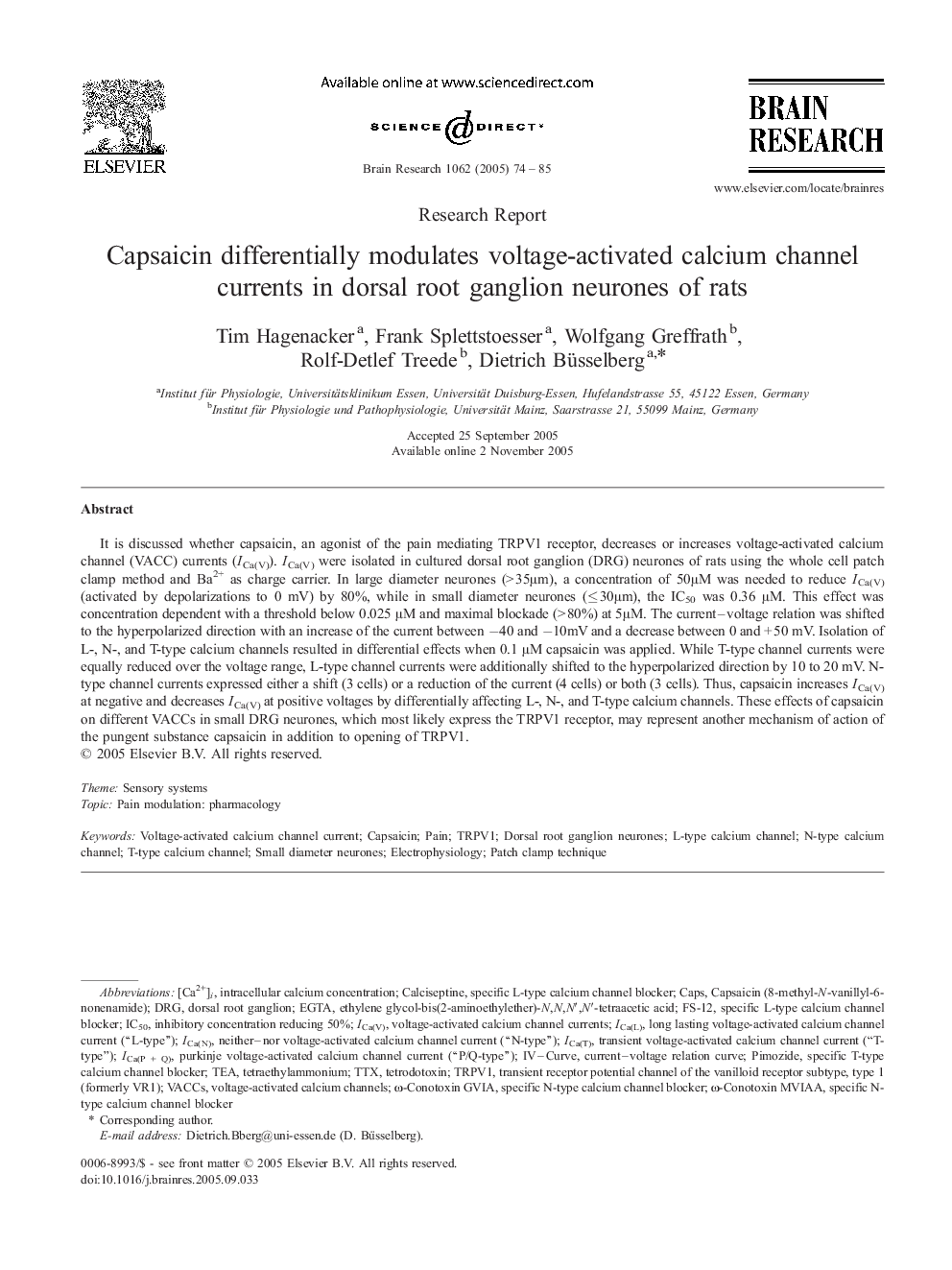| Article ID | Journal | Published Year | Pages | File Type |
|---|---|---|---|---|
| 9415807 | Brain Research | 2005 | 12 Pages |
Abstract
It is discussed whether capsaicin, an agonist of the pain mediating TRPV1 receptor, decreases or increases voltage-activated calcium channel (VACC) currents (ICa(V)). ICa(V) were isolated in cultured dorsal root ganglion (DRG) neurones of rats using the whole cell patch clamp method and Ba2+ as charge carrier. In large diameter neurones (>35μm), a concentration of 50μM was needed to reduce ICa(V) (activated by depolarizations to 0 mV) by 80%, while in small diameter neurones (â¤30μm), the IC50 was 0.36 μM. This effect was concentration dependent with a threshold below 0.025 μM and maximal blockade (>80%) at 5μM. The current-voltage relation was shifted to the hyperpolarized direction with an increase of the current between â40 and â10mV and a decrease between 0 and +50 mV. Isolation of L-, N-, and T-type calcium channels resulted in differential effects when 0.1 μM capsaicin was applied. While T-type channel currents were equally reduced over the voltage range, L-type channel currents were additionally shifted to the hyperpolarized direction by 10 to 20 mV. N-type channel currents expressed either a shift (3 cells) or a reduction of the current (4 cells) or both (3 cells). Thus, capsaicin increases ICa(V) at negative and decreases ICa(V) at positive voltages by differentially affecting L-, N-, and T-type calcium channels. These effects of capsaicin on different VACCs in small DRG neurones, which most likely express the TRPV1 receptor, may represent another mechanism of action of the pungent substance capsaicin in addition to opening of TRPV1.
Keywords
TRPV1CAPSTTXEGTAIC50DRGdorsal root ganglion[Ca2+]iω-conotoxin GVIAethylene glycol-bis(2-aminoethylether)-N,N,N′,N′-tetraacetic acidElectrophysiologyTetraethylammoniumtetrodotoxinPatch clamp techniquePainSensory Systemsintracellular calcium concentrationPain modulation: pharmacologyDorsal root ganglion neuronesPimozideTEAL-type calcium channelN-type calcium channelT-type calcium channelCapsaicin
Related Topics
Life Sciences
Neuroscience
Neuroscience (General)
Authors
Tim Hagenacker, Frank Splettstoesser, Wolfgang Greffrath, Rolf-Detlef Treede, Dietrich Büsselberg,
